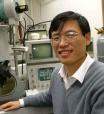Portable XRF technology is viable approach for seafood provenance
Research indicates that the portable x-ray fluorescence (XRF) is an appropriate analytical technique for determining seafood provenance at external sites.

Showing 1421 - 1440 of 1701 results
Research indicates that the portable x-ray fluorescence (XRF) is an appropriate analytical technique for determining seafood provenance at external sites.
The nature of Metal-Oxide-Semiconductor Field Effect Transistors (MOSFETs) present a fascinating paradox in space exploration. Their strength in radiation detection becomes their weakness in space operations, exposing an Achilles' heel for NASA. Yet, these same devices monitor radiation doses received by humans on earth and in space.
Pamela Naidoo-Ameglio takes up executive role

Research on the impacts of land-use, contamination, water management and climate variability on aquatic ecosystems..
ANSTO has installed a radon detector for Curtin University in Burrup WA as part of the Murujuga Rock Art Monitoring Program



Nuclear Reaction Analysis (NRA) detects charged particles and is used predominantly to determine concentrations and depth profiles of the lighter elements.

Beamtime guide on the Far infrared beamline at the Australian Synchrotron.

Accelerator Mass Spectrometry (AMS) is an ultra-sensitive analytical technique based on the use of an ion accelerator as a powerful mass spectrometer.
Invisible deuterated detergents revealed
Snapshots of an unprecedented double element-hydrogen bond activation at a transition metal centre.
Protein found in tobacco plant can target and kill microorganisms,
Measurements of the naturally-occurring radioactive gas radon can be used to accurately categorise the degree of atmospheric mixing.
Australia’s knowledge centre for nuclear science and engineering, ANSTO, announced an exciting career opportunity for Aboriginal and Torres Strait Islander peoples.

Project focuses on enhancing crop productivity in Asia Pacific countries by improving soil and water.